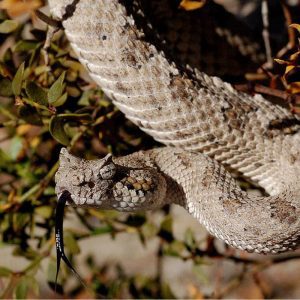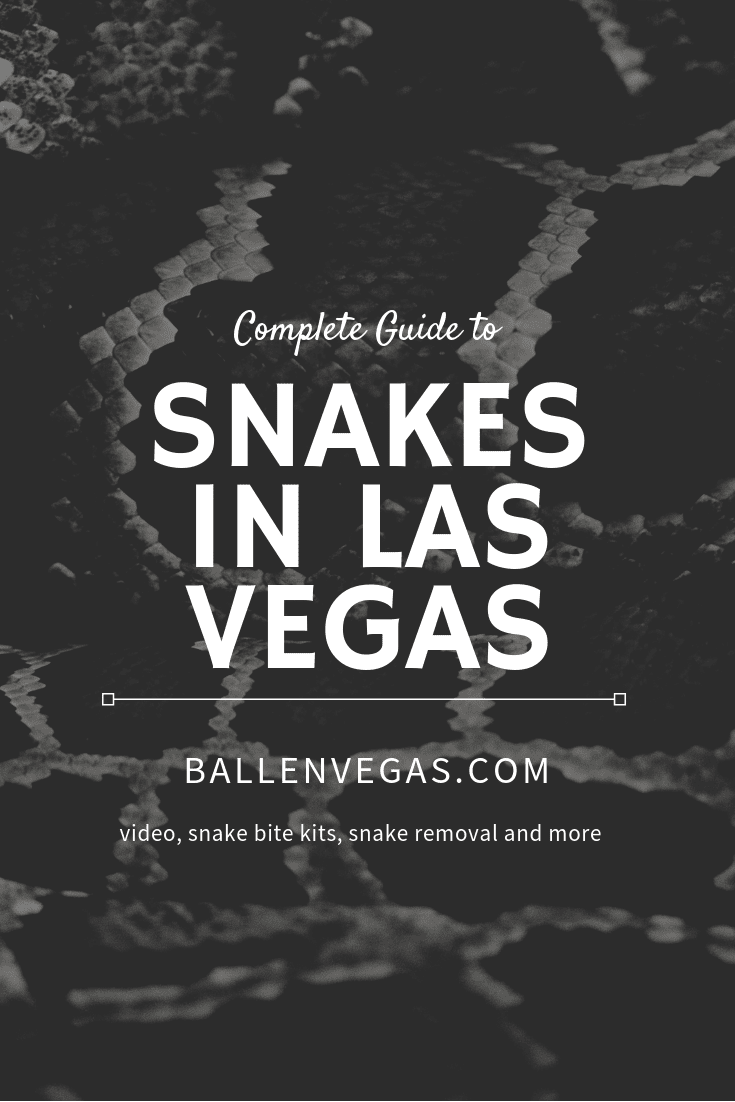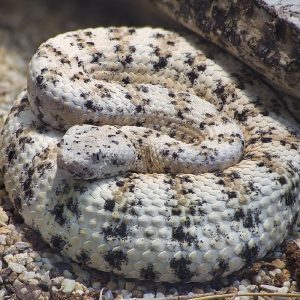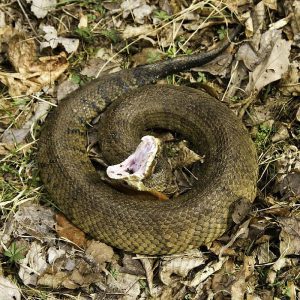Lori Ballen, the owner of this website, benefits from purchases made through her affiliate links.
As an Amazon Associate, I earn from qualifying purchases. Some links on this site are affiliate links. Portions of this content are generated by AI.
Most residents of Las Vegas are familiar with certain pests – spiders, lizards, and scorpions. But lately, Las Vegas has had an influx of what might be considered an unexpected creepy crawler – snakes.
Most rattlesnakes are found in Red Rock Canyon, Valley of Fire, Lake Mead, and Mount Charleston.
If you see a snake, stay calm and back away from the snake.
Turtlehead Peak and Calico Basin are known to have rattlesnakes. Experts warn that you should not try to maneuver around the snake or it may view you as a threat. Back away and take another route.
What Kind of Snakes?
When it comes to a snake encounter in Las Vegas, although not all snakes are venomous, there’s no point in taking a risk or a gamble.
Knowledge is power, and the more you know about sin city’s slithering occupants, the better chances you’ll have of avoiding them, or seeking treatment if bitten.
Nevada is home to harmless rat snakes and garter snakes, but also houses copperheads, water moccasins or cottonmouth – and more common, a variety rattle snakes.
Rattlesnakes
Throughout the state of Nevada, there are half a dozen varieties of venomous rattlesnakes. Although rattlesnakes can prove deadly, they’d rather not bite if they can avoid it.
A rattlesnake will do its best to warn you of its presence with its rattling tail. But some of the species are so small, their rattle may be difficult to hear.
Knowing where snakes seek shelter, and when they’re most active, could help you avoid a snake encounter altogether.
Las Vegas is inhabited by three types of venomous rattlesnakes. The first is the sidewinder, also known as the horned rattlesnake.
The Horned Rattler

Named for the protrusions above its eyes, the horned rattler, also called the Sidewinder, is a light tan color with dark markings.
The snake’s colors help camouflage the creature in the desert surroundings.
Like many of the locals of Las Vegas, this snake is nocturnal. It, too, takes advantage of the night life in Las Vegas, when temperatures are cooler, and where it can use darkness as an invisibility cloak.
During the day, the sidewinder can be found, often coiled, beneath a bush or beside a rock.
Although this snake is little, usually under two feet in length, it can pack a powerful punch with a moderately venomous bite.
The horned rattler will do everything in its power to warn you to keep your distance, but because of its tiny rattler, its warning may be difficult to hear.

The Mojave rattlesnake

This is one bad boy you do not want to mess with.
The Mojave rattlesnake is one of the most venomous of all rattlesnakes.
This serpent is also called the Mojave green, but that name can be misleading.
In some circumstances, the snake can appear to have a green hue.
But it’s also a master of disguise, blending itself with its surroundings.
You can identify the Mojave rattlesnake by the outlined diamonds on its back, the diagonal stripes on the sides of its head, and rings around its tail in black and white. It can grow up to four feet in length.
The Mojave rattlesnake, like its relatives, will try to caution trespassers with its rattling battlecry, but if you tread too closely, it will aggressively defend, offering a fight in which you do not want to engage.
You might also like: Lake Mead reachest Lowest Water Level – Should we be worried?
Southwestern Speckled Rattlesnake

The southwestern speckled rattlesnake is moderately toxic and timid.
This four-foot rattler would rather retreat than fight, but don’t let that fool you.
This slithering reptile’s reputation was built on the large quantities of venom it can inject in a short period of time, making it a dangerous opponent.
This snake, like the others, has an uncanny knack for being able to make itself nearly invisible in its desert surroundings.
Its colors vary from gray, brown, orange, salmon, and sometimes a blend of all of the above. Typically, its the color of surrounding rock.
The southwestern speckled rattlesnake has dark, seemingly faded speckles on its back, leading to bands near the tail.
Others have read: Fun at the Springs Preserve
Water Moccasins

You wouldn’t necessarily expect to find a water moccasin in the desert, but don’t let the name or terrain mislead you.
North America’s only water snake with a venomous defense system and heat-sensing capabilities make it a dangerous neighbor to have.
Also called the cottonmouth because of the white color of its inner mouth, the snake warns with a wide-open jaw, displaying its ability to inject poison.
Cat-like eye pupils and stripes from each nostril are identifying factors of this dangerous beast, but its young don’t have the same features, making them even more of a threat.
Many people mistake water moccasins for other harmless water snakes, putting themselves in harm’s way.
The cottonmouth snake, brownish in color, typically grows up to four feet, but larger snakes of this species have been spotted in the Las Vegas area. This snake is thick in body, but has a thinner area near the head, making it one of the few snakes who appear to have a neck.
Copperheads

Another venomous contender in the Las Vegas valley is the copperhead snake.
Although its venom is mild and its presence more common, this snake is the most likely to offer up an unprovoked bite.
Fittingly, the snake is named for its distinct copper-colored head but is often mistaken for a harmless rat snake, or confused with the water moccasin.
Copperhead snakes can grow between two and three feet in length. Females are known to be longer than males, but males are recognized for having longer tails.
This snake is identifiable by its rust-colored markings atop skin that can be salmon-colored, pink, tan, or brown. This is the only snake that has patterns resembling an hourglass.
All of these venomous snakes are pit vipers, meaning they have heat sensors between their eyes and nose. They can sense the most minute change in temperature, giving them a distinct advantage. You don’t have to see them for them to know you’re there. They can read your body heat.
Snakes in Las Vegas may be unwelcome guests, but they don’t have to be a danger. By learning to identify the types of snakes and knowing where those snakes reside can make a dangerous encounter avoidable.
Do not attempt to treat a snake bite yourself.
Tourniquets can cause more damage than good, an incision can cause infection, and trying to suck venom from a bite has minute effects. When a snake bite occurs, seek medical attention immediately.
When snakes are located on or near your property, do not try to remove them yourself. Las Vegas has several professional services for extracting unwanted pests.
Snake Removal Companies
- Home Guard Pest Control Company: 89123 702-935-2700
- RedRock Pest: 89115 (702) 518 – 2580
- Snake Removal Nationwide Service: 702-577-2880
- Father and Son Pest Control: (702) 389-4333
What To Do When You See a Snake
Living in Las Vegas
- 6 Steps to Getting Married in Las Vegas
- Desert Plants and Animals of Las Vegas: A Nature Lover’s Guide
- Best Las Vegas Christmas Light Displays
- Airstream Park, Tiny Living in Downtown Las Vegas
- The Ultimate Guide to Las Vegas Zip Codes: Explore the City and Its Neighboring Areas
As an Amazon Associate, I earn from qualifying purchases. Some links on this site are affiliate links. Portions of this content are generated by AI.